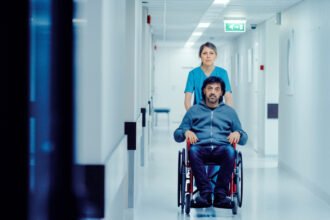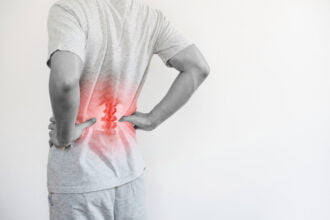Slip and fall injuries are a frequent cause of emergency visits and long-term health complications, affecting people of all ages. While the physical consequences can be serious, these incidents also raise questions about responsibility and prevention in communities and healthcare settings. Recognizing how these injuries occur and their aftermath is crucial for creating safer environments and supporting those impacted.
Many slip and fall accidents happen in places where people expect to be safe, such as community centers, parks, and medical facilities. When these incidents occur, the aftermath involves more than just healing. It often leads to legal concerns about accountability and rights, which adds another layer of complexity. Combining health awareness with knowledge of legal considerations helps build a more comprehensive response to these events.
Additionally, the ripple effects of slip and fall injuries can stretch beyond the individual. Families, employers, and healthcare systems may all feel the strain of recovery and potential legal battles. Recognizing this wider impact encourages a community-oriented approach to safety and legal awareness, fostering environments where prevention and support go hand in hand.
The legal side of slip and fall incidents
According to Langley Law Firm, slip and fall injuries often involve questions about liability and duty of care. Property owners and managers have a responsibility to maintain safe spaces and minimize hazards. When they fail to meet these obligations, affected individuals may seek legal recourse to address damages, medical costs, and other losses.
Legal claims related to slip and fall injuries can be complex, depending on factors such as the location of the incident and the specific circumstances. For communities and healthcare providers, understanding these legal aspects is important for preventing claims and fostering trust. By addressing potential risks proactively, these groups reduce both injury rates and legal exposure.
Recognizing the legal dimension encourages communities and healthcare providers to implement clear protocols for incident reporting and investigation. Establishing these procedures not only protects the injured party but also helps organizations learn and improve safety measures. This proactive stance creates a foundation of transparency that benefits everyone involved.
How prevention reduces harm and legal issues
Preventing slip and fall injuries starts with identifying common risk factors such as wet floors, uneven surfaces, and poor lighting. Regular maintenance and safety checks in public and healthcare spaces help catch these hazards before accidents occur. Investing in prevention not only protects health but also lowers the chance of costly legal disputes.
Training staff and community members on recognizing and responding to dangers encourages a proactive culture of safety. Clear policies and quick responses to potential issues demonstrate care and accountability. This approach fosters collaboration, creating safer environments and reducing the burden on healthcare resources and legal systems.
Another key part of prevention is ongoing education that keeps everyone informed about the latest safety standards and hazard recognition. By continuously updating knowledge and adapting to new challenges, communities and healthcare providers stay ahead of risks. This commitment to learning also signals responsibility, which can be crucial if legal questions arise.
Beyond training and maintenance, encouraging a culture where individuals feel comfortable reporting hazards immediately adds another layer of protection. When people speak up about potential dangers without fear of blame, it becomes easier to address risks before accidents happen. This kind of open communication supports continuous improvement and strengthens the overall safety network.
Supporting recovery while considering liability
When slip and fall injuries happen, prompt medical care is critical to recovery. Healthcare providers must treat injuries while also documenting details that could be relevant if legal claims arise. Accurate records and open communication contribute to better outcomes and clearer understanding for all involved.
Communities and healthcare facilities can also play a role in supporting individuals during their recovery by offering resources and follow-up care. Balancing compassion with awareness of legal responsibilities helps build confidence. This ensures that injured individuals feel supported without compromising necessary accountability.
At the same time, it is important for healthcare providers to be mindful of privacy and consent while gathering information. Respecting patients’ rights while fulfilling documentation requirements fosters trust and protects both parties. This balance ensures that recovery and legal processes proceed smoothly without unnecessary conflict.
Building partnerships to improve safety
Bringing together community leaders, healthcare professionals, and legal experts strengthens efforts to reduce slip and fall injuries. Collaborative programs focused on education, environment improvements, and policy development address risks from multiple angles. These partnerships foster shared responsibility and amplify the impact of safety measures.
Engaging the public through outreach and feedback channels encourages active participation in injury prevention. When communities feel involved, they become allies in creating safer spaces. This inclusive approach supports both health and legal well-being, contributing to a more resilient society.
Sustained partnerships also allow for the development of tailored solutions that meet the specific needs of each community. By working closely, stakeholders can share data, monitor trends, and adjust strategies in real time. This flexibility leads to more effective prevention and a stronger safety culture overall.
Finding balance in health safety and legal awareness
Slip and fall injuries demand attention from both health and legal perspectives. A well-rounded approach involves prevention, prompt care, and clear policies that respect the rights of individuals and communities. When healthcare providers and community leaders work together, they create safer environments that reduce risks and build trust.
Emphasizing legal awareness alongside health initiatives ensures that everyone involved understands their roles and responsibilities. This clarity helps prevent injuries and addresses consequences fairly when accidents occur. Ultimately, fostering a culture of care and accountability leads to stronger, healthier communities where safety is a shared priority.
This balance is not static but requires ongoing commitment and adaptation as environments and laws evolve. Regular review and open dialogue keep all parties aligned and responsive. In the end, a shared dedication to health and legal awareness protects individuals and strengthens the fabric of the community.










